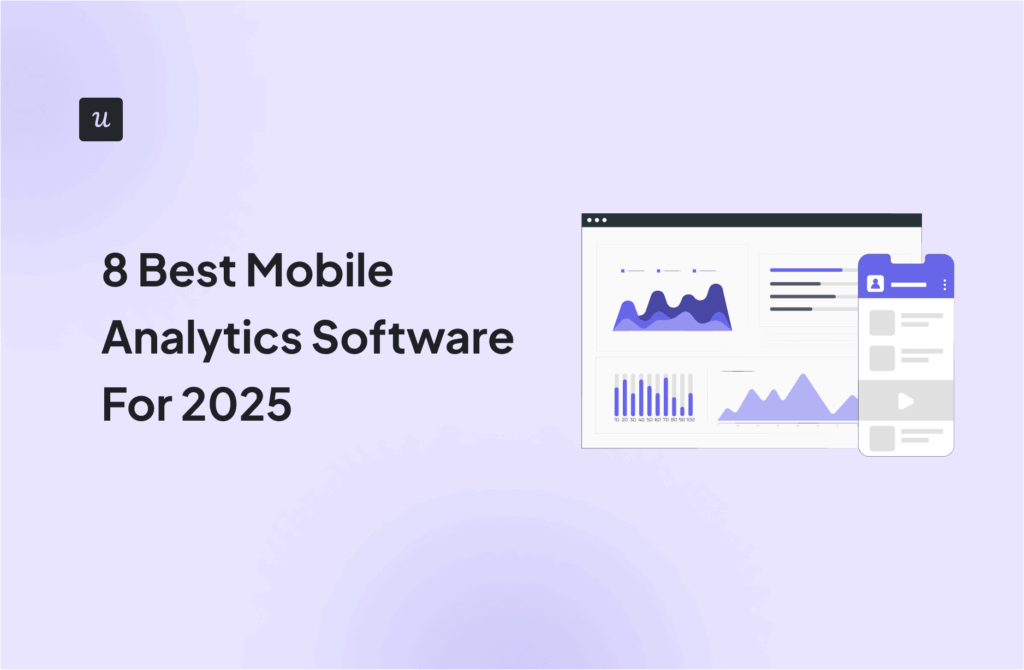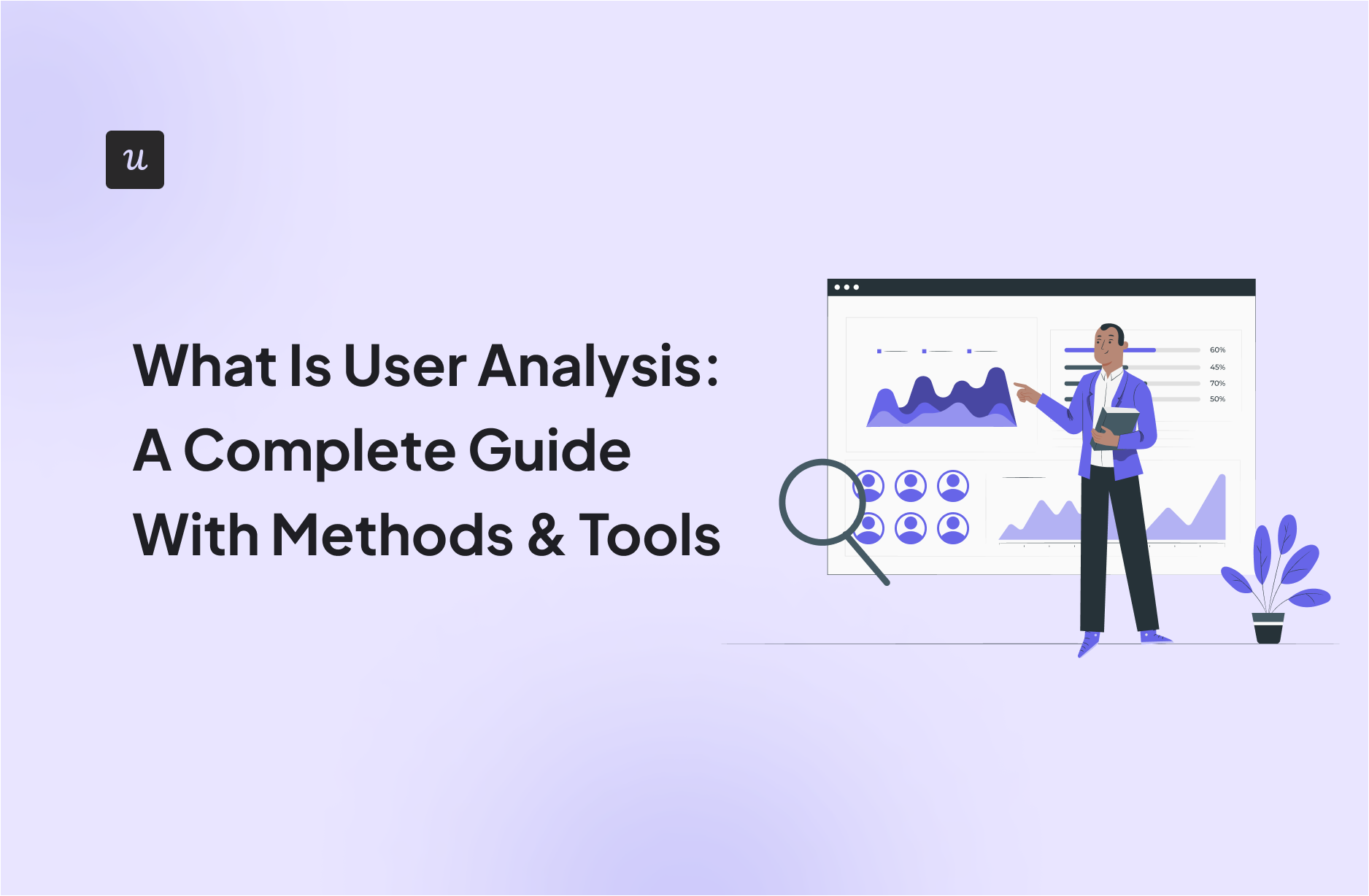
Understanding how users interact with your product is key to improving their experience and driving growth. User analysis helps you uncover patterns in behavior, identify friction points, and make data-driven decisions to enhance engagement and retention.
Let’s get down to the nitty-gritty and learn how to perform user analysis.
Get The Insights!
The fastest way to learn about Product Growth, Management & Trends.
What is user analysis?
User analysis is the process of collecting and interpreting data to understand how users experience the product, what they like, and why they churn.
Companies that value human-centered design cherish the user analysis process because the insights provided by it are valuable in creating a customer-centric experience.
How is user analysis important for different teams?
User analysis helps different teams understand what users need, how they behave, and what they care about – making it easier to create better experiences.
- Product managers use user analysis to prioritize features and ensure the product roadmap aligns with user expectations.
- Product marketing managers utilize user analysis to develop targeted messaging and effective go-to-market strategies.
- Customer success managers leverage user analysis to anticipate challenges and enhance user satisfaction and retention.
- UX designers rely on user analysis to create intuitive interfaces and delightful user experiences that meet user needs effectively.
Different types of user analysis you can perform
Here I’ll break down a few types of user analysis that inform product roadmaps and drive product growth from different perspectives.
User research analysis
User research analysis involves studying user behavior, preferences, and pain points through methods such as:
- Usability testing: Helps assess how easily users can accomplish specific tasks within the app.
- First click testing: Focuses on the first click users make, revealing initial impressions and navigational challenges.
- Card sorting: Helps understand how users categorize information, aiding in intuitive information architecture and a user-centered design process.
- Customer feedback surveys: Collects user opinions, preferences, and suggestions, providing valuable qualitative data.
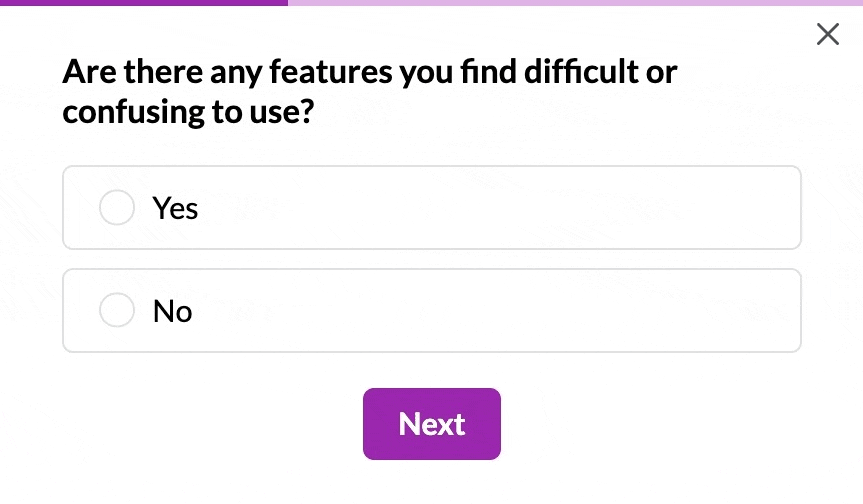
Goals include understanding user motivations, uncovering usability issues, and identifying opportunities for product improvement.
Task analysis
Task analysis helps you understand user actions and motives. You’ll learn what motivates users to begin a task, how long it takes them to perform a task, and where/if the friction occurs.
You’ll also learn how much effort is required to reach the desired outcome when using your product.
Altogether, it prevents you from making false assumptions about how users see your product and what value they derive from it. This knowledge, in turn, helps you enhance product design, in-app experiences, customer onboarding, etc.
User behavior analysis
User behavior analysis gives you a deeper understanding of your target audience, speaking from a product standpoint.
For example, you can track product usage and see when users reach certain milestones. You can also see the sequence of activities users perform to complete a task in real time.
Understanding different user behaviors helps you stay ahead in the marketing by directly meeting your audience’s needs.
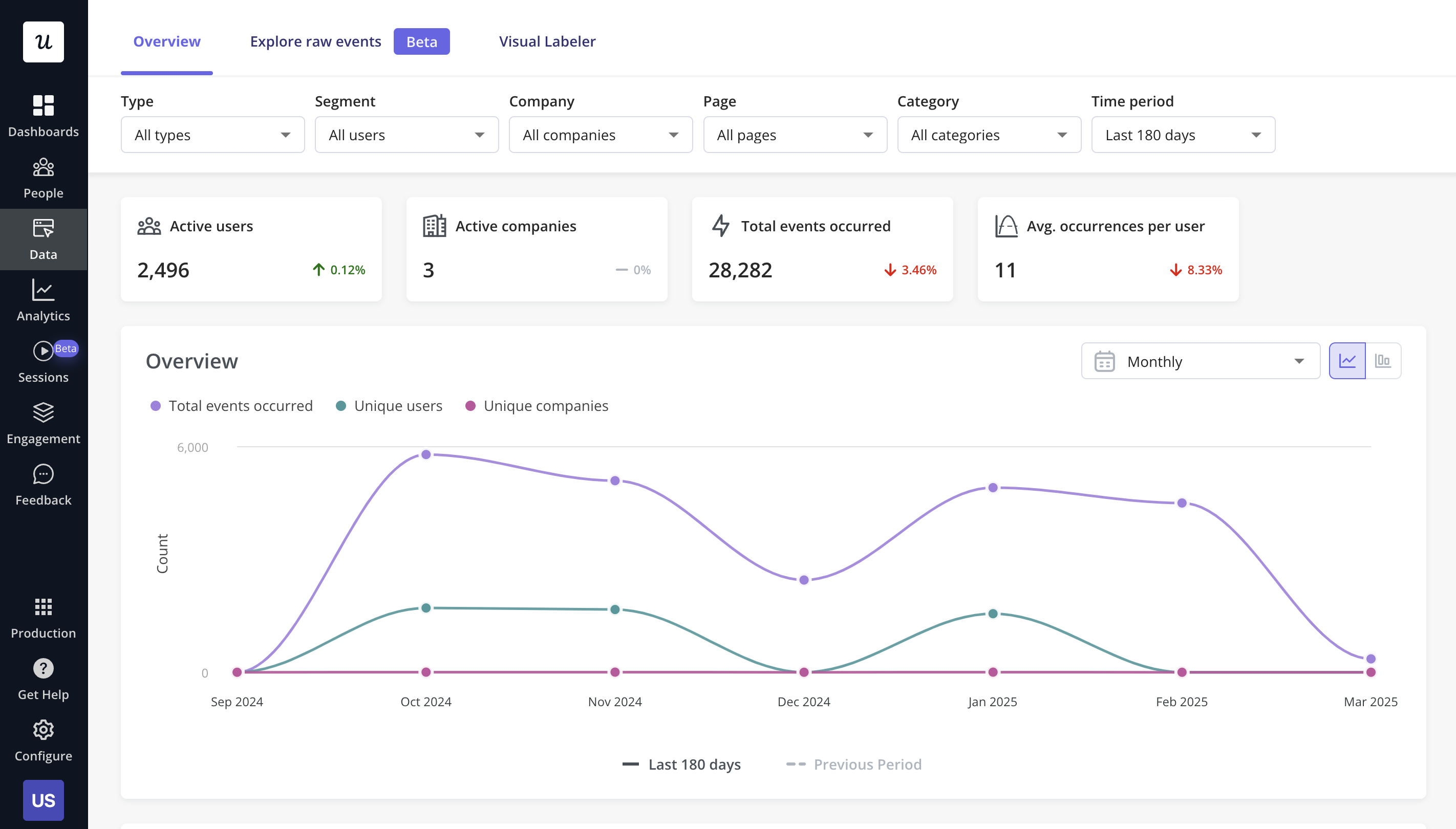
User sentiment analysis
Customer feedback analysis is the process of understanding user sentiment and needs to boost satisfaction and decrease churn.
To understand user sentiment, you must analyze both qualitative and quantitative data. Common feedback sources for qualitative data are:
- Onboarding surveys: Explores different customer personas and the goals they are trying to achieve.
- User interviews: Gives a comprehensive understanding of specific user behavior and preferences.
- CSAT surveys: Shows the overall customer satisfaction.
- NPS surveys: Uncovers promoters and detractors and how they feel about your company.
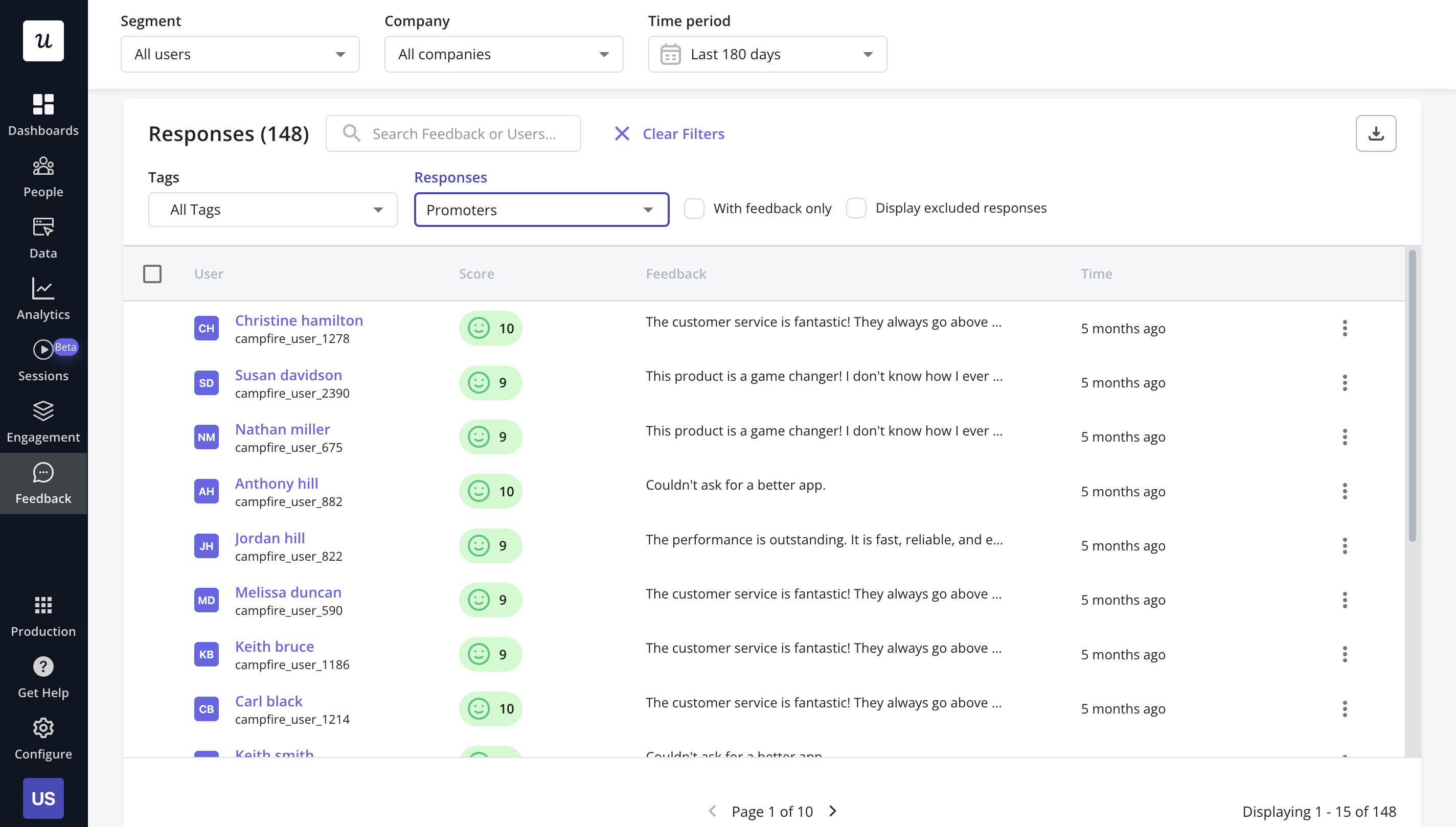
💡 Tip: Don’t forget to close the feedback loop. For that to happen, you need to act on feedback and make changes based on the insights gathered. Even if you don’t make changes, still acknowledge (and appreciate) that you received the feedback.
User experience analysis
To improve customer satisfaction and loyalty, product teams analyze customer experience gaps and user engagement levels.
User experience analysis includes usability testing, focus groups, session recordings, and prototype testing.
For instance, when watching user sessions, you can observe how users navigate the product and detect UX friction points. Removing the latter will help reduce churn and increase engagement.
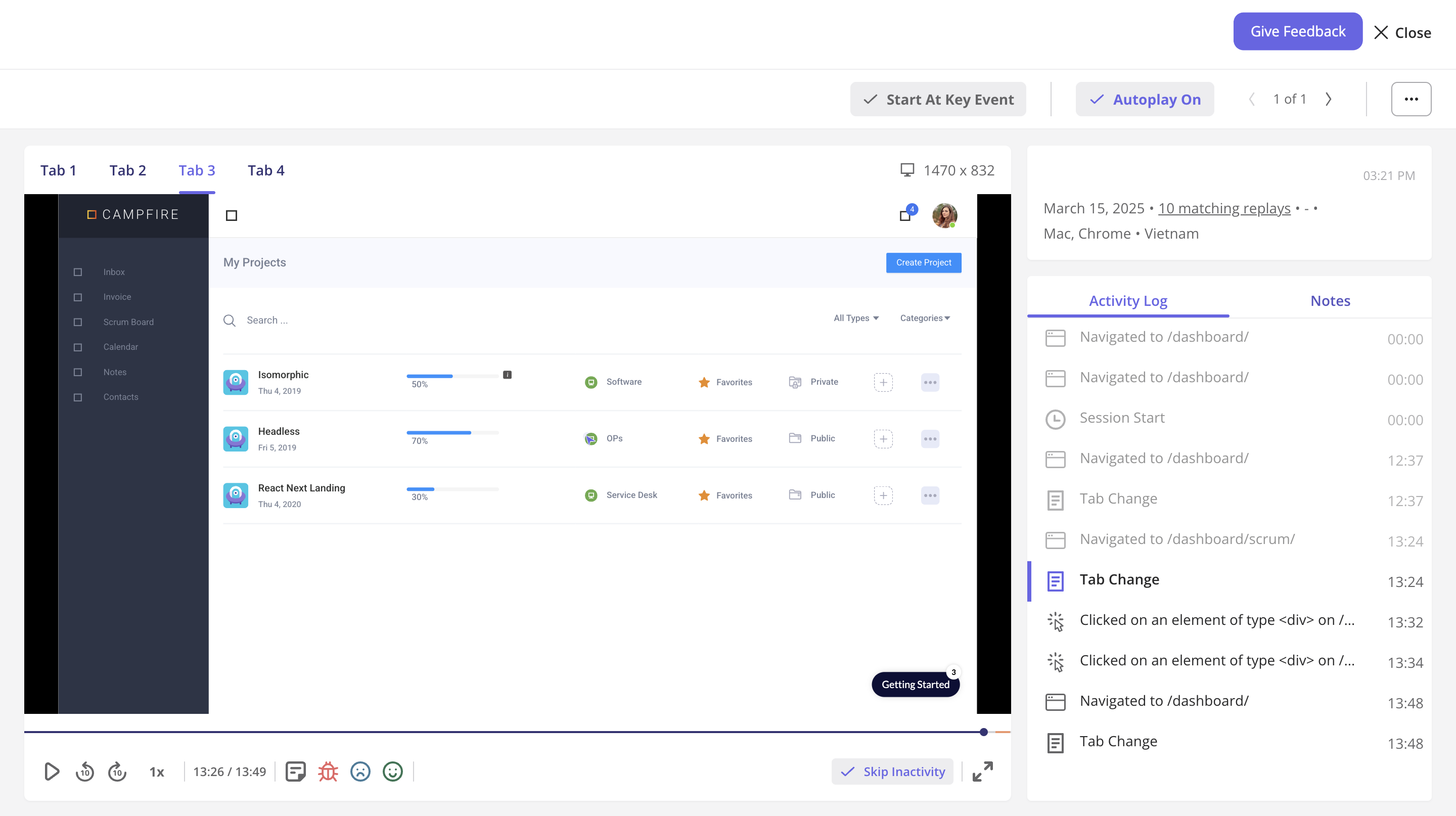
Funnel analysis
Tracking user funnels is key to carrying out user journey analysis and pinpointing drop-offs at each stage.
By visualizing conversion rates, funnel analysis reveals where users disengage and highlights opportunities to enhance the experience and boost conversions. It also helps stages of concern, allowing you to prioritize features and updates that improve usability.
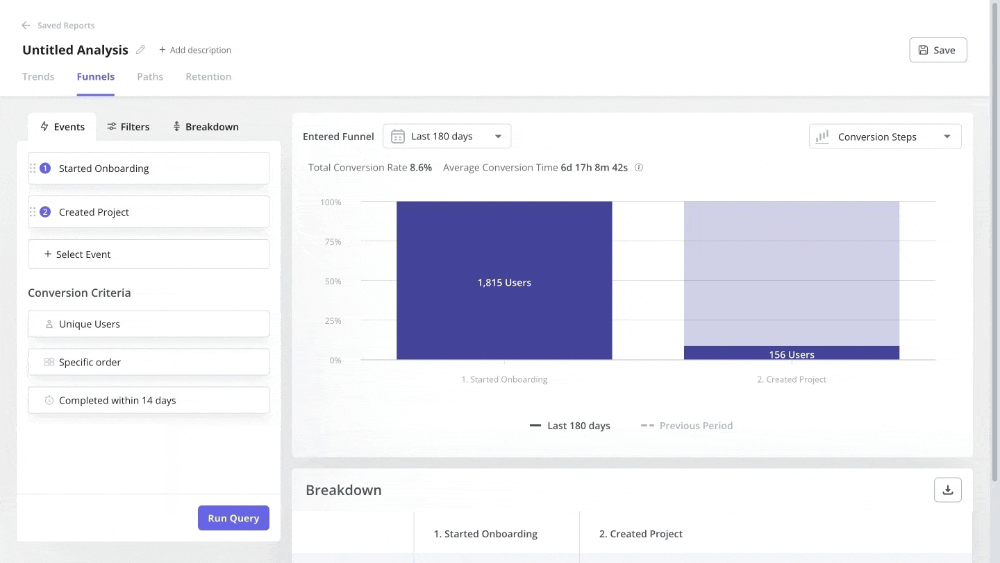
Path analysis
User path analysis is an exploratory model used to track and analyze the sequence of actions and steps users take when navigating through your website or app.
This type of analysis helps understand user behavior in greater detail, identify any user friction and bottlenecks, and optimize the user experience.
Performing a user path analysis has several advantages, such as reduced churn, increased retention and customer satisfaction, and greater lifetime value.
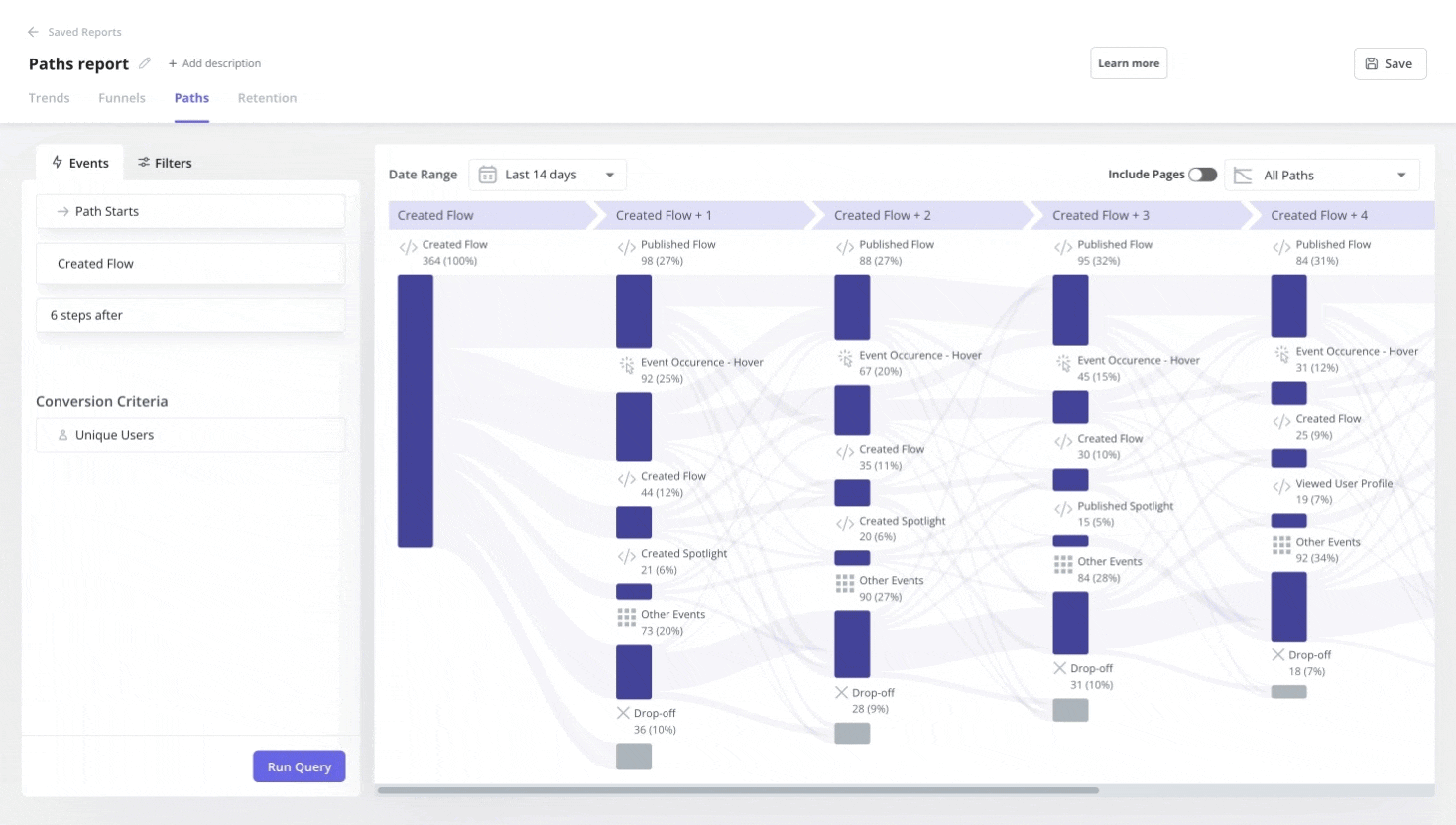
Cohort retention analysis
Cohort retention analysis is the process of tracking user engagement with the product over time. However, instead of looking at the user population as a whole, it looks at specific user groups linked to specific events or timeframes.
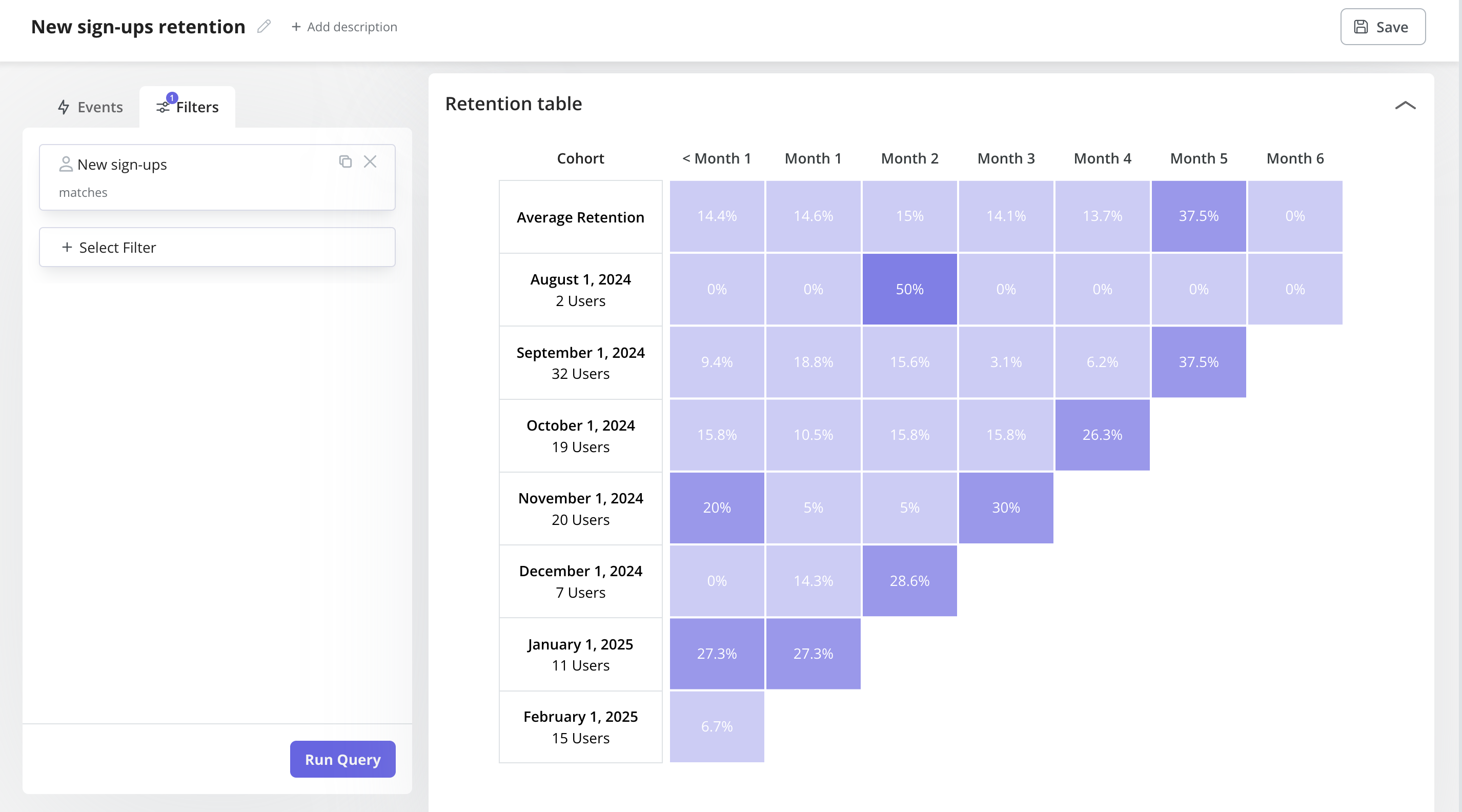
By measuring how well different groups are retained, cohort analysis helps you evaluate your retention strategies, identify the most successful ones, and make data-driven decisions to improve your retention efforts.
When should you carry out user analysis?
There are four primary situations where you can conduct a user analysis:
- When designing a new product: User analysis will help you create a human-centric product design and a seamless user journey.
- When designing a new feature: Track how your users interact with this feature in beta and find insights on how you can make it better. This way you can measure new feature success.
- When working on an update for an existing product: Detect friction points in the user experience and product drawbacks, and then solve them with a new update.
- When optimizing retention and reducing churn: Analyze in-app behavior to spot disengagement early and use targeted nudges or in-app messages to keep users active.
How to perform user analysis step-by-step? (+ best tools)
This part will guide you through the step-by-step process and best practices for user analysis. Let’s dive right in!
Step 1: Segment your users based on user personas
Your first step in user data analysis is to create user personas and group customers by different criteria or shared characteristics. This will help you compare user experiences and behaviors in different segments to tailor product experiences.
You can use user segmentation to group customers based on specific criteria such as location, NPS scores, user activity, company size, etc.
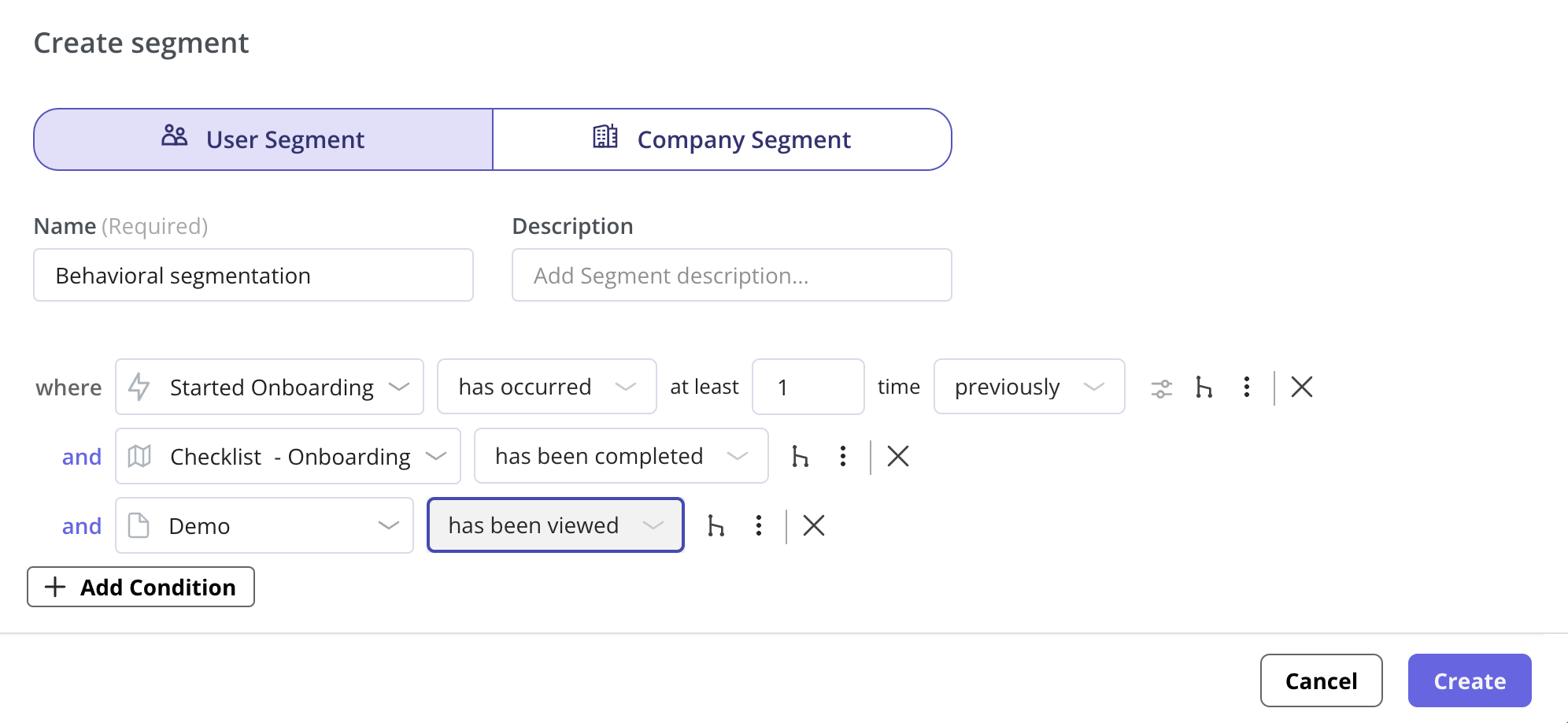
Step 2: Create user journey maps for different personas
After segmentation, create specific goals for each user segment to reach and map out their journey.
👉🏻 Let’s learn from an example:
Say you noticed that the user segment of new signups exhibits high churn. So you aim to eliminate churn and increase retention.
You can do so with a tailored onboarding flow and track what percentage of users have completed the steps in it. This helps you identify user drop-offs for re-engagement and spot high-friction steps that need improvement.
Step 3: Collect user analytics data
Track product usage and engagement data to understand how users interact with different features. This helps identify which features drive engagement, where users drop off, and how to improve the overall experience.
This step should not be complex with the right tool by your side. For instance, with Userpilot’s autocapture, you can automatically track user interactions (such as clicks, hovers, and form submissions) without needing manual event tagging.
This gives you a real-time view of user behavior, helping you make data-driven decisions to refine the user journey and boost retention.
Step 4: Use different types of user analytics tools for actionable insights
Combine different analytics tools for accessing product and website data to deepen the understanding of user behaviors. Here are my top recommendations:
Userpilot: Recommended for tracking in-app user behavior
Userpilot is a product growth platform with powerful analytics capabilities that rival dedicated analytics tools. Here’s an overview of Userpilot’s analytics features:
- Customer profiles: Userpilot’s customer profiles give you an overview of all user data in one place. You can filter data by segments, which companies users are from, or when they were last seen active. You can also export data in bulk as a CSV or perform actions on individual users.
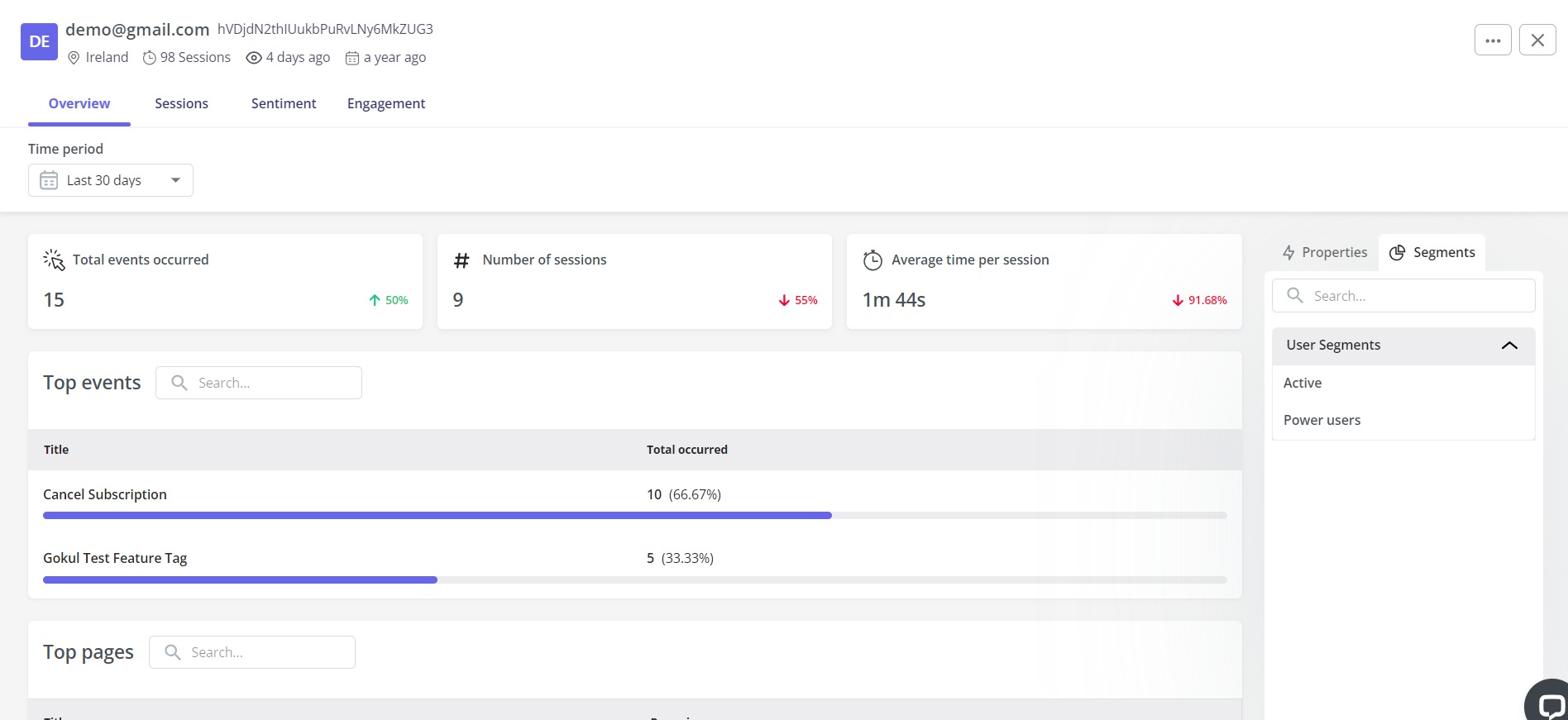
- Conditional segmentation: Userpilot’s segmentation allows you to group users based on specific behaviors, attributes, or in-app actions. This helps you deliver personalized experiences, trigger targeted flows, and analyze engagement patterns more effectively.
- Analytics reports: With Userpilot, you can create funnels, trends, cohort retention, and path reports to track user behavior, identify drop-offs, and optimize engagement. These insights help you improve conversions, retention, and overall product experience.
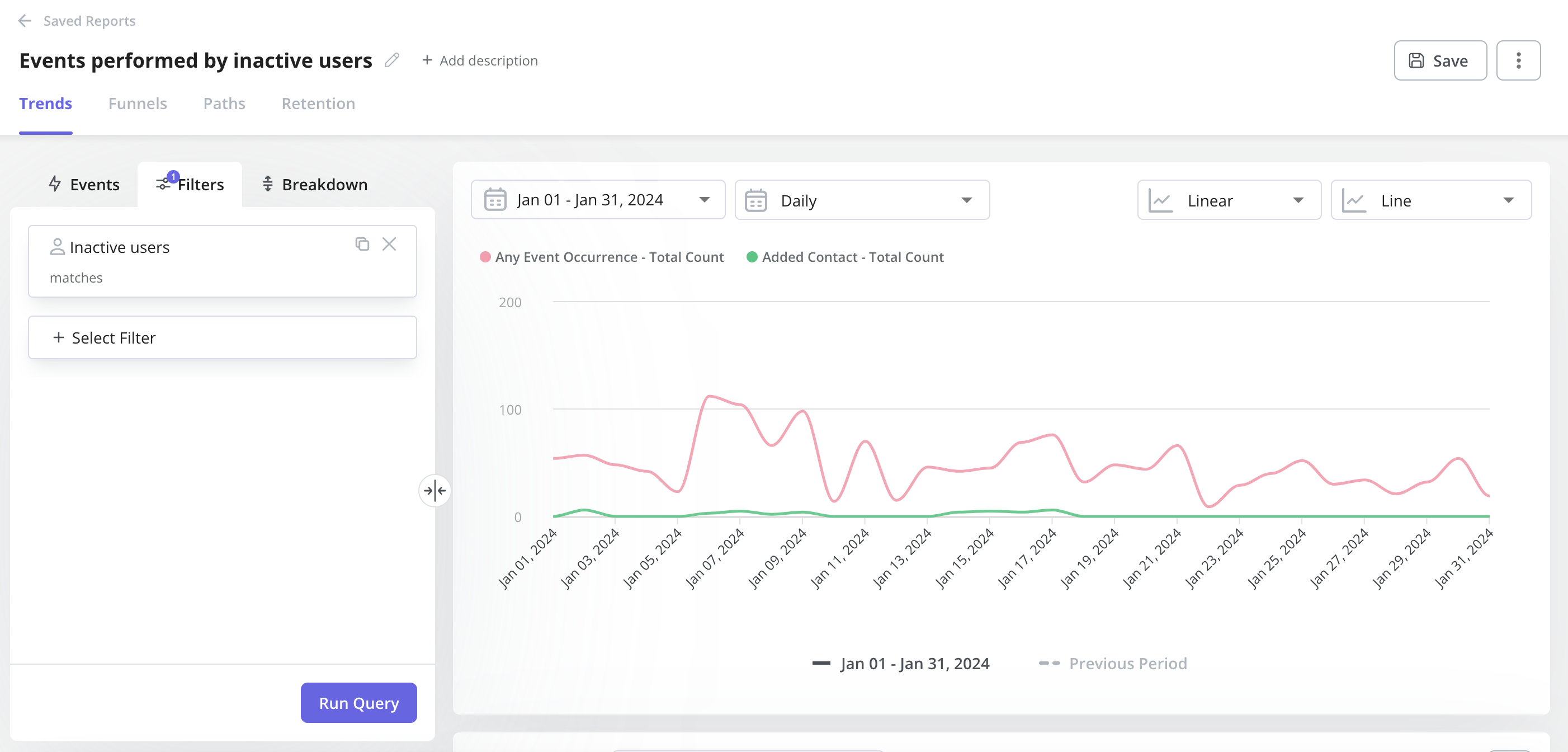
- Session replay: Userpilot’s session replay lets you watch real user interactions in your product, helping you see where they get stuck, what confuses them, and how they navigate. This gives you a deeper understanding of user behavior beyond numbers, so you can fix friction points and improve the experience.
- Dashboards: Once you log in to Userpilot, you will see a collection of dashboards that collect all your key product metrics like product usage, user activation, feature engagement, etc. These dashboards can be customized and easily shared with other team members.
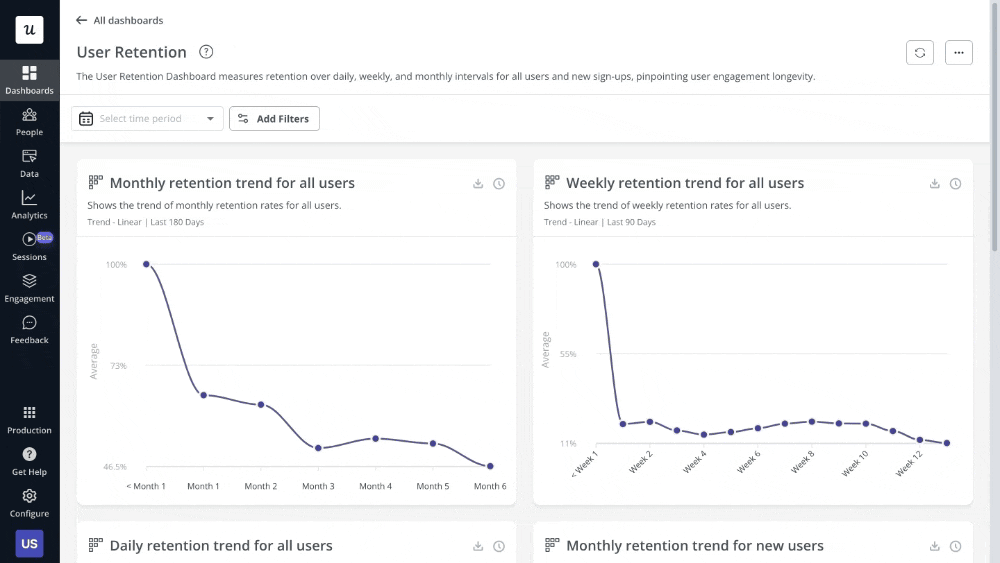
Userpilot’s customers are a big fan of its analytics features. Here’s what Anubhav has to say:
Userpilot is an amazing analytics tool which provides deep understanding about the users visiting our app, starting from their onboarding to any events which they do on our app. Its visual graphs and charts are also great and make it easy for us to conduct our analysis.
Hotjar: Recommended for viewing heat maps
Hotjar is a robust user and website analytics tool that comes with a brilliant heatmapping feature and can be a great option for implicit in-app feedback.
It allows you to record the browser actions of your users while they are on your website or app. This includes clicks, scrolls, and mouse movements. Its session recording functionality also opens a whole new world of insights into user activity.
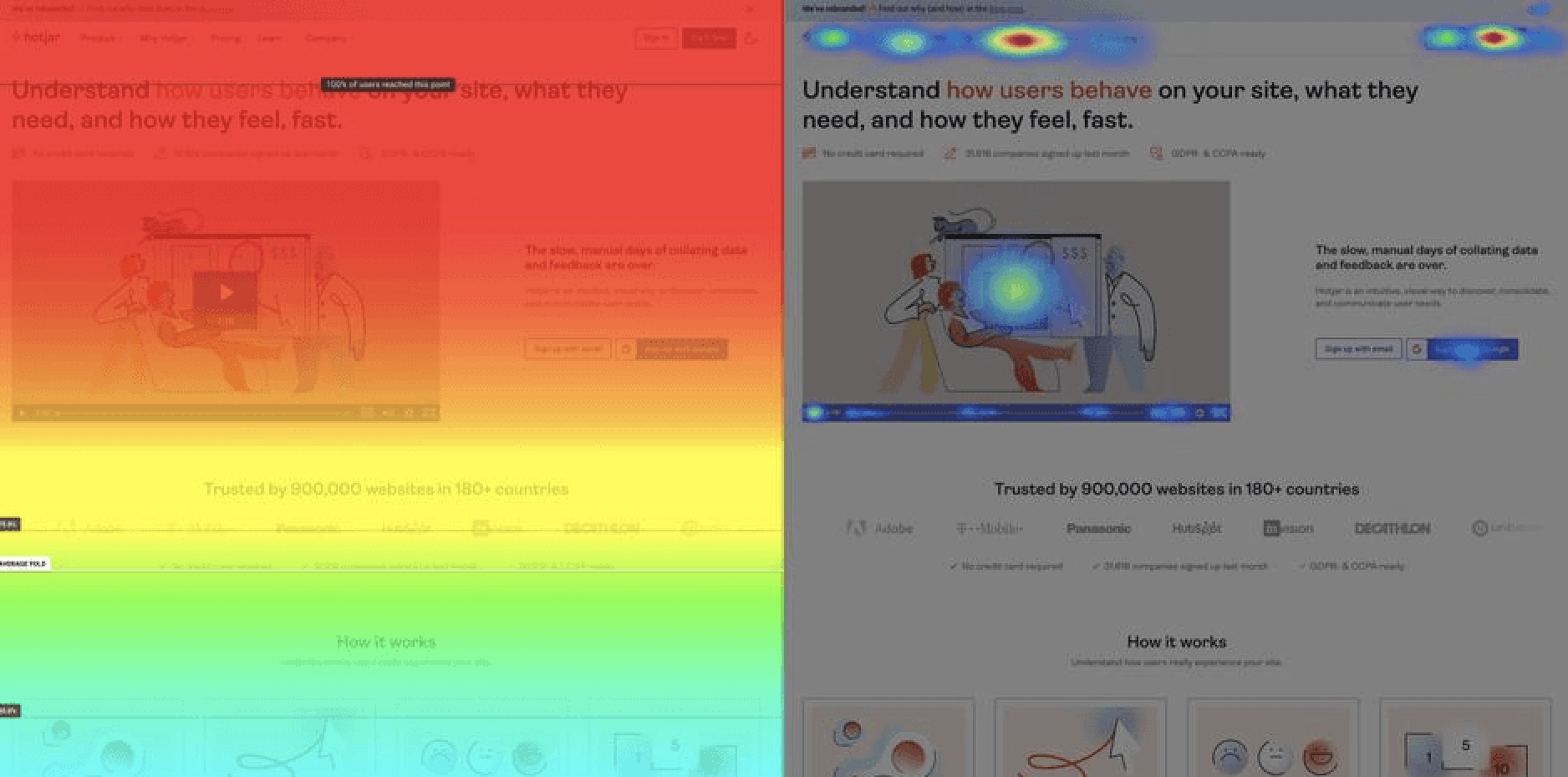
Google Analytics: Recommended for website analytics
Businesses use Google Analytics to analyze user actions, website traffic, and product achievements. Here are some ways SaaS companies can use Google Analytics for user analytics:
- Event tracking: You’ll find several auto-collected events that are mainly for marketing analytics and conversion purposes. But if you need to track product events, you have to define events and set trigger conditions in Google Tag Manager, which is often a bit complex for non-tech users.
- Product data import: The product data import feature is excellent for tracking user behavior and conversions. This simplifies and reduces the amount of data you need to send by importing product data.
- Customer journey report: With charts like funnels and paths, it allows you to visualize and analyze the steps users take before completing a desired action.
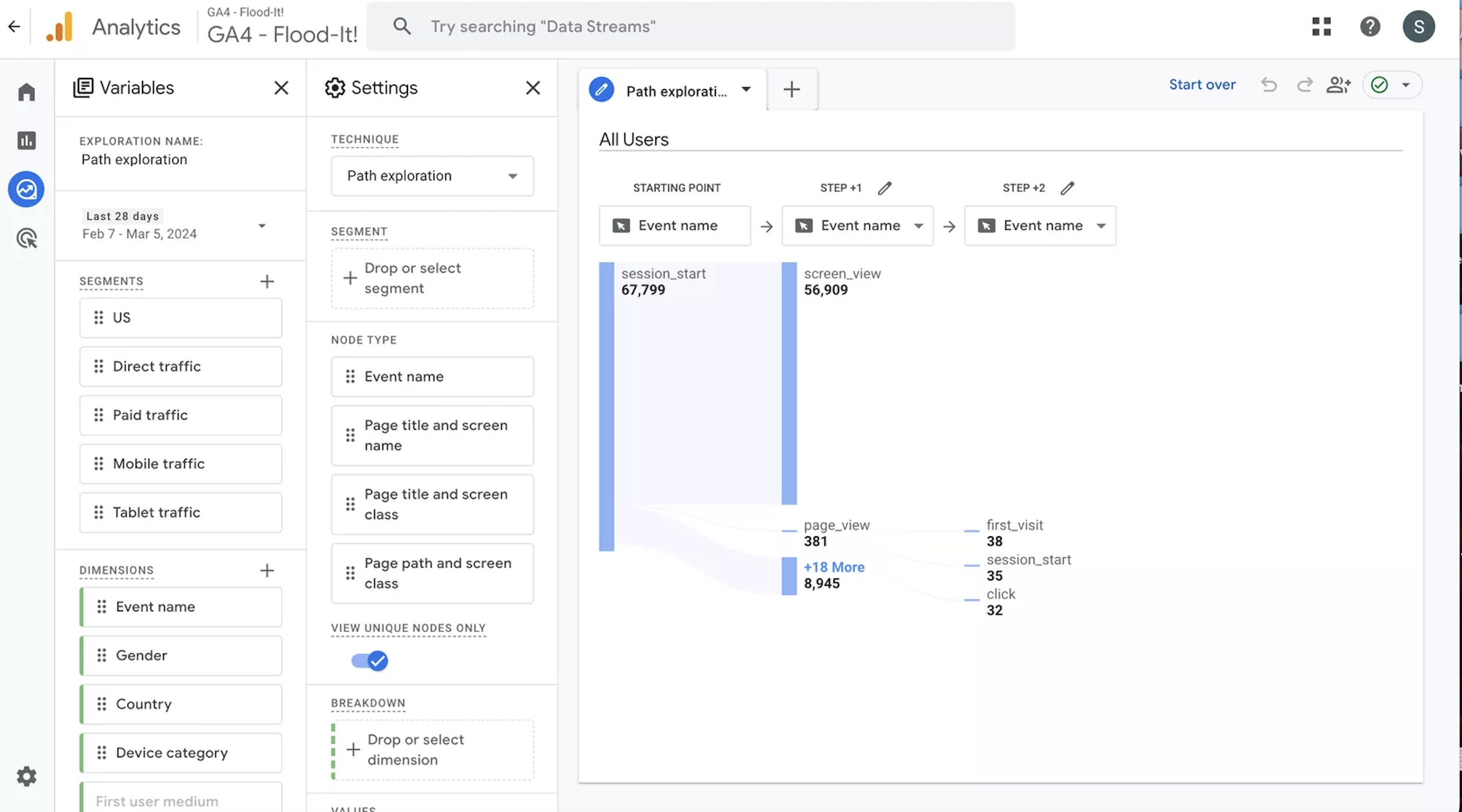
Step 5: Build a user analysis strategy and test it
Once you complete the initial steps of user analysis, create hypotheses based on the insights and put them into action.
Continue observing the metrics, and see if the changes affect the conversions, reduce churn, or drive engagement.
Run A/B-testing to test out different hypotheses within one segment and see which in-app engagement flow drives your goals up.
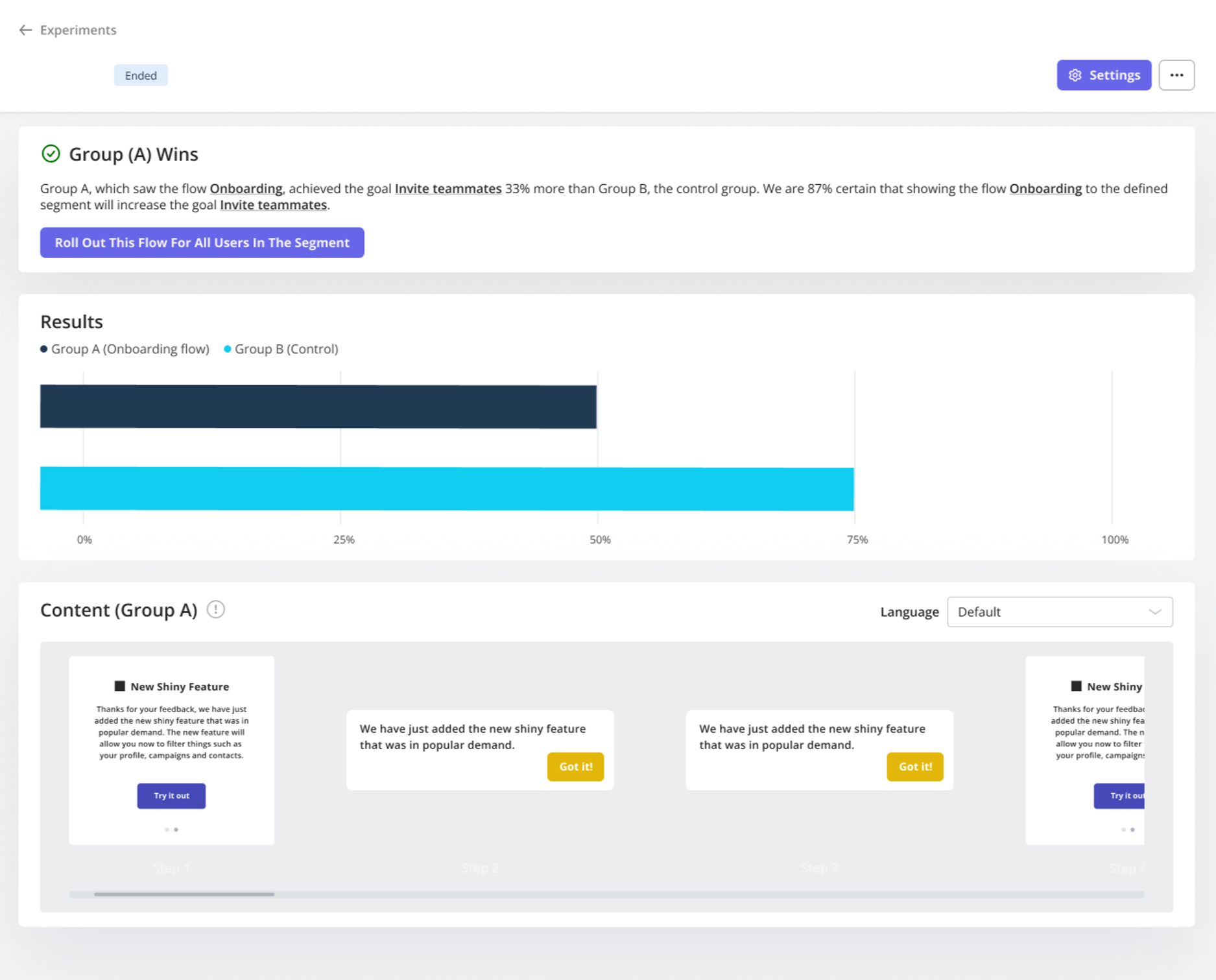
One thing to remember is that user analysis is an ongoing process that requires a lot of testing. Keep analyzing, refining, and updating your product roadmap based on what you learn.
Ready to collect valuable insights from user analysis?
User analysis helps you spot what’s working, what’s not, and where users struggle. By collecting the right data, you can refine your product, enhance customer satisfaction, and drive growth.
But this all starts with choosing the right tool. Give Userpilot a try as it not only analyzes user behavior in detail, but also enables you to act on the insights and test their effectiveness. Book a Userpilot demo to learn more.






